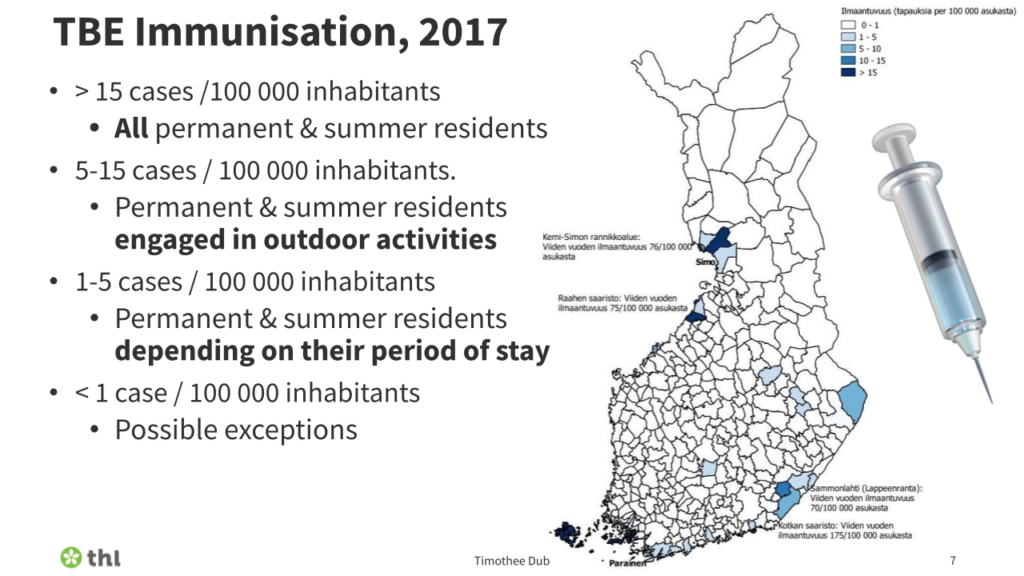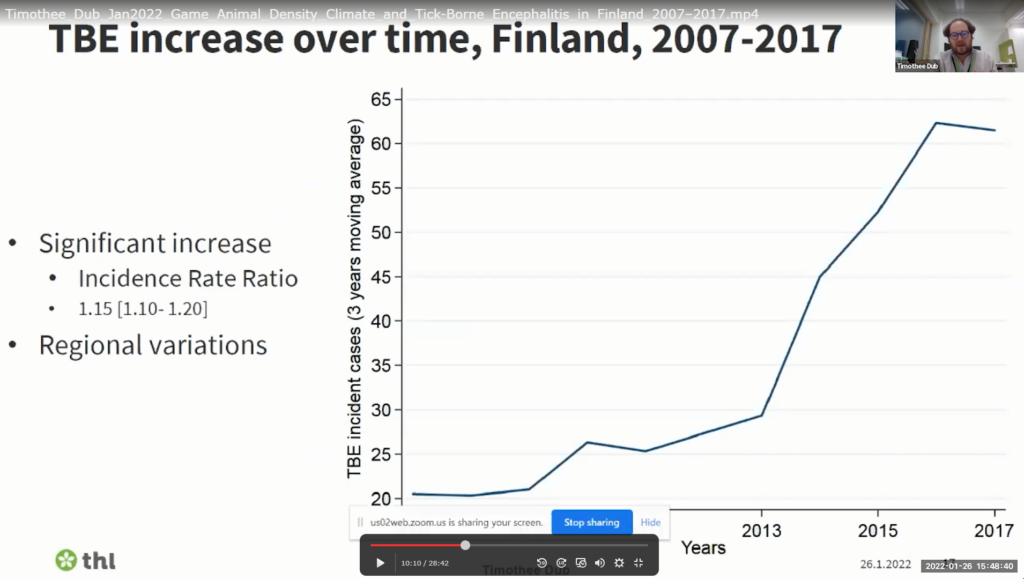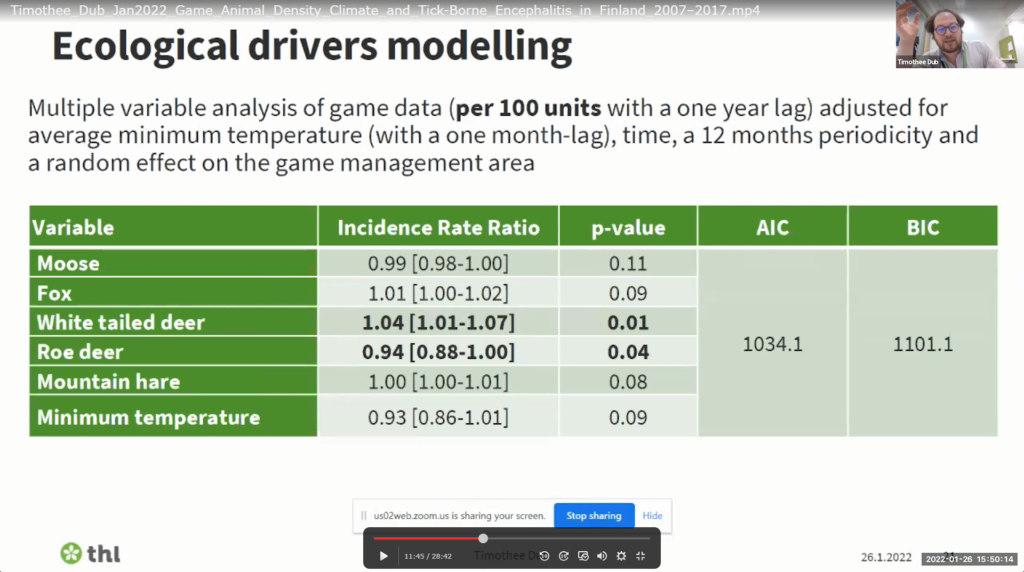Tick-borne encephalitis (TBE) has become a growing public health challenge in Europe and other parts of the world. The number of human cases of TBE in all endemic regions of Europe has increased by almost 400% in the last 30 years; with spreading risk areas and new foci across Europe and worldwide, TBE has been included as one of the biggest health threats arising from environmental change. Novel assessment and monitoring strategies are therefore needed to face current and future outbreaks.
For our first MOOD science webinar of 2022, we invited Timothee Dub, Research Manager in the department of Health security of the Finnish Institute for Health and Welfare (THL) to discuss the results of his paper published in Emerging Infectious Disease ‘Game Animal Density, Climate, and Tick-Borne Encephalitis in Finland, 2007–2017’.
Dr Dub is a public health medical doctor trained in epidemiology and he’s is also working on a project that aims to estimate and predict risks of vector-borne disease emergence and/or spread in relation to climate change in Finland and strongly involved in public health training and capacity building through local supervision of junior epidemiologists and participation to numerous teaching activities. Nonetheless, Timothee is also the case study facilitator for the TBE, leading the activities related to the co-design and development of Epidemic Intelligence tools for Public Agencies launched in July 2021.

A growing concern
“TBE infection is asymptomatic and this is something we should consider when doing surveillance” started Timothee. In Finland “we have laboratory-based enhanced surveillance established since 1995” continued Tim, recording about 60-70 lab-confirmed cases per year between 1995 and 2013 in identified outbreaks areas (foci) across the country. Out of the 488 cases reported since 2007, only 395 included place and time information making them suitable for the analysis.
Since the Tick-Borne Encephalitis Virus (TBEV) is mostly transmitted through ticks (Ixodes ricinus or Ixodes persulcatus) infecting birds and mammals, this investigation combined the available epidemiological information with hunting data as a proxy for animal density. The team then conducted “what is known as a very basic time-series analysis” for each game management area, including also the temperature data available from the weather stations to investigate the role of climate on the disease dynamics.
The outcomes of the analysis were quite straightforward, showing a steep increase in laboratory-confirmed TBE cases over the decade between 2007 and 2017. Similarly to other European regions, “In Finland, we’ve also seen that TBE was expanding towards the North of the country, where it was normally a Southern disease” as Tim specifies, theorizing that milder temperatures could have expanded the duration of TBE season and the probability of human exposure with ‘more time spent outdoor.’

However, the team was surprised to find out that the only significant factor positively associated with the TBE infection surge was the density of the white-tailed deer (Odocoileus virginiaus). As Tim explained, prior to being introduced in Finland, this game species was also imported from North America in the Czech Republic, where TBE is endemic, but no study has been conducted to understand their effect on incidence trends so far.
With a spike in its population since its introduction in Finland in 1930, there is a question that still remains: could this species have a strong participation to TBE spread in Finland? More accurate data on animal density should be integrated to unveil the role of this host species on the virus circulation.
The effect of environmental factors, including animal density and climate change on vector-borne diseases, is a growing concern in Finland. “I think it’s totally plausible to say that global warming has an effect on the spread and circulation of TBE” explained Tim, with more suitable areas for TBEV and its hosts forecasted along with climatic changes.

Reshaping disease surveillance
Overall, Tim’s work highlighted that integrating data on human disease incidence, dynamics of host communities, and vectors and environmental variables, including climate is necessary when assessing regional TBE risk, forecasting future trends, and designing interventions.
With novel emerging diseases, a general increase in TBE cases across Europe, and limited human resources, “we need to think about a different surveillance system for TBE ” to improve Epidemic Intelligence and resource allocation, in Tim’s perspective.
The use of modern analysis tools combined with empirical field studies, and predictive spatiotemporal modelling for intervention strategies is at the centre of the MOOD’s case study for TBE led by Timothee and will be developed in deep collaboration with Public Health agencies from Europe.
Watch the full presentation and interview:


